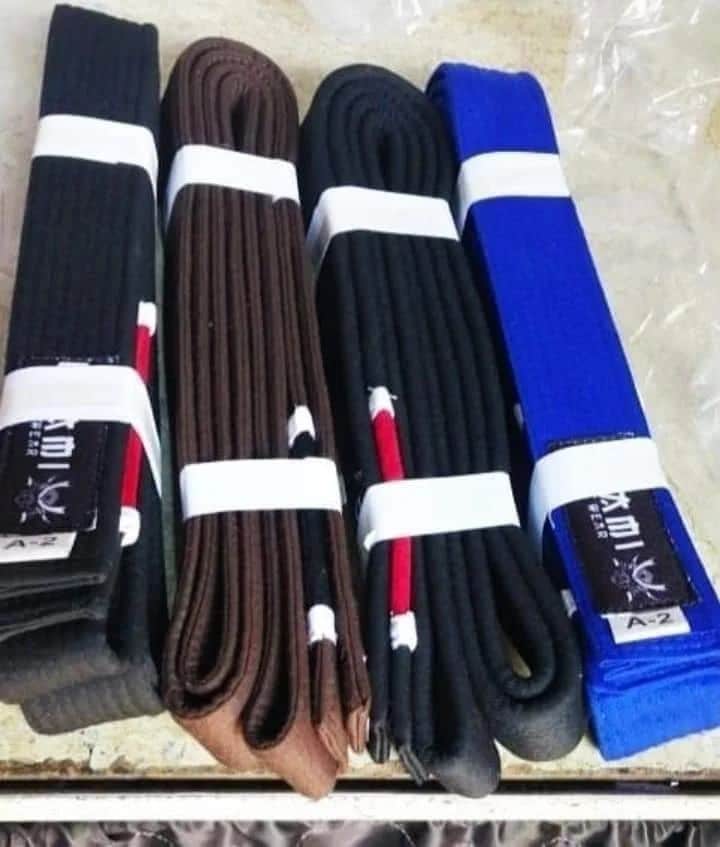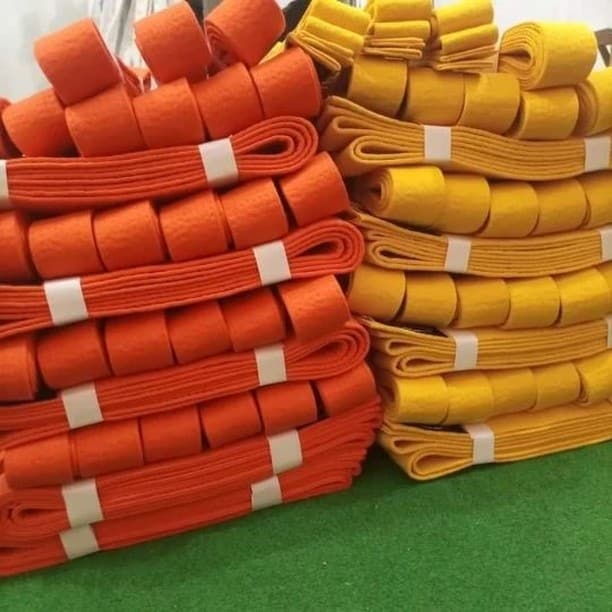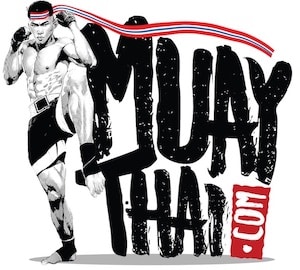Does Muay Thai Have Belts?
Does Muay Thai have belts? There are dozens of martial arts that utilize a belt system to denote mastery in the sport. This includes Jiu Jitsu, Karate, Taekwondo, Judo, and Kung Fu, among many others. But specifically, does Muay Thai have belts? Not traditionally.
Although some Western gyms use colored Pra Jiad, Muay Thai armbands, for rankings fighters based on proficiency, this act is purely Western-based and not used in traditional Muay Thai gyms in Thailand. Pra Jiad is used in conventional Muay Thai but this is a Buddhist symbol and has nothing to do with mastery in Muay Thai. Does Muay Thai have belts? In some Western-based gyms, yes.
Why do some martial arts use a colored belt system?
The colored belt system is implemented in many martial arts disciplines as a ranking system that visually represents a practitioner’s skill level and progress. Each belt color signifies a specific level of proficiency, allowing instructors, students, and observers to easily assess an individual’s experience and knowledge in the martial art. Does Muay Thai have belts that relate to this system? Not in traditional Muay Thai.
Moreover, the colored belt system helps students set clear goals and stay motivated throughout their training journey. As students advance through the ranks, they work towards achieving the next belt rank, providing them with a tangible sense of accomplishment and progress. This pursuit of higher belt ranks serves as a motivation for students to train harder, refine their techniques, and deepen their understanding of the specific martial art. Ultimately, the colored belt system creates a hierarchical structure that aids in organizing and tracking the development of practitioners in their martial arts journey.
Martial Arts Colored Belts

It’s important to note that while many martial arts use a colored belt system, the specific colors and progression may differ between styles and schools. The belt system serves as a means to recognize and distinguish different levels of expertise within a particular martial art. Does Muay Thai Have Belts? Yes and no. Similar to other martial arts, it varies by school. But it would not be found in traditional Muay Thai.
Does Muay Thai Have Belts? Muay Thai, a martial art known for its striking techniques and rich cultural heritage, stands apart from many other traditional martial arts in terms of its ranking system. Unlike disciplines such as Karate or Judo that employ a colored belt system, Muay Thai does not have a standardized belt ranking structure. While some Western gyms have introduced the use of colored Pra Jiad armbands for ranking purposes, this practice is not traditional in Muay Thai gyms in Thailand. The absence of a formal belt system in Muay Thai reflects the unique nature and historical development of this ancient art form.
Several martial arts utilize a colored belt system to represent different proficiency levels. Some of the most well-known martial arts that employ this system include:
Karate
Many styles of karate, such as Shotokan, Goju-Ryu, and Wado-Ryu, use a colored belt system. The progression typically starts with a white belt and advances through various colors, such as yellow, orange, green, blue, purple, brown, and eventually black.
Taekwondo
Taekwondo, a Korean martial art known for its dynamic kicks, also utilizes a colored belt system. The ranks usually begin with a white belt and progress through yellow, green, blue, red, and black.
Brazilian Jiu-Jitsu
In Brazilian Jiu-Jitsu (BJJ), practitioners begin with a white belt and then progress through blue, purple, brown, and black belts. The Jiu Jitsu belt system also incorporates additional degrees or stripes on belts to represent further progress within each rank.
Judo

Judo, a Japanese martial art focused on throws and grappling techniques, follows a colored belt system. Students usually start with a white belt and then progress through yellow, orange, green, blue, brown, and black.
Aikido
Aikido, a Japanese martial art emphasizing blending and redirecting an opponent’s energy, often employs a colored belt system. The belt colors vary between different organizations, but they generally follow a progression from white to black.
When did the Martial Arts belt system begin?
Does Muay Thai Have Belts? Well, let’s take a look at why colored belts exist in Martial arts at all. The colored belts in Martial Arts can be traced back to a Japanese-born gentleman by the name of Kano Jigoro. Jiu Jitsu, at this point, was developed by the Samurai warriors, hundreds of years earlier, to have a combat system if they happened to lose their weapon on the battlefield.
Kano Jigoro, in the late 1800s, was a passionate martial arts student who wanted to practice Jiu Jitsu however he was too small. He studied the best techniques in Japanese Jiu JItsu and Sumo wrestling and created a system where a smaller man could defeat a larger opponent. Kano Jigoro called would come to name the system he invented ‘Judo.’
This martial arts expert, Kano Jigoro, also had a major hand in the future of MMA. One of his top students was Mitsuyo Maeda. Maeda traveled around the world teaching martial arts to people, he called it Jiu Jitsu. Eventually, he was contracted to be a full-time martial arts teacher for the Gracie family in Brazil. The Gracie family is one of the most important influences when it comes to the founding and history of MMA.
For Judo, Kano Jigoro developed a colored belt system in the late 1800s. Kano developed the belt ranking system as a way to distinguish and recognize the different levels of skill and experience among his students. The original system consisted of only two colors: white and black.
Initially, all practitioners wore white belts, which symbolized their beginner status. As students progressed and demonstrated proficiency in Judo techniques, they were awarded a black belt, representing a high level of skill and mastery. However, Kano soon realized that there needed to be a way to differentiate between various levels of expertise within the black belt rank.
To address this, Kano introduced a system of colored stripes that could be added to the black belt. Each stripe represented a specific level of advancement within the black belt rank. This led to the development of the dan system, which assigns degrees or levels, for example, 1st dan, 2nd dan and so on, within the black belt rank.
Over time, other martial arts disciplines, such as Karate, Taekwondo, and Brazilian Jiu-Jitsu, adopted and adapted the colored belt system to their respective styles. The specific belt colors and the order of progression through the ranks may vary between martial arts and individual schools, but the concept of using colored belts to signify skill levels can be attributed to Jigoro and his implementation in Judo.
However, the influence of Kano did not spread to Thailand. Does Muay Thai Have Belts? Traditionally speaking, it never had a colored belt system to denote expertise in its combat sports system.
Does Muay Thai Have Belts?
Does Muay Thai have belts? In traditional Muay Thai gyms in Thailand, there is no colored belt system as there is in other traditional martial arts. You may be asking does Muay Thai have belts because you may have seen some people listed as a black belt in Muay Thai. This is due to Western gyms.
Some Western gyms took the colored belt idea and brought it into Muay Thai through the Pra Jiad, the armbands. The Pra Jiad and traditional headband, the Mongkon, are used in Muay Thai as a Buddhist symbol to bring good luck and safety to the wearer during their bout. The colors of the Pra Jiad traditionally have nothing to do with Muay Thai proficiency. Does Muay Thai Have Belts? Not in Thailand.
The Pra Jiad Muay Thai colored belt systems are akin to the belt systems you’d encounter in Karate, Jiu Jitsu, or Judo. However, it’s important to note that this system is entirely foreign to Thailand’s rich martial arts heritage, and you won’t stumble upon any gyms in the country employing it. Does Muay Thai Have Belts? Not traditionally.
Does Muay Thai Have Belts? It emerged in Western Muay Thai gyms as a convenient adoption by many Western Muay Thai gyms, allowing newcomers to quickly grasp their progress. Since numerous practitioners were already accustomed to the belt ranking system through their experiences in Jiu-Jitsu or Karate, the Pra Jiad system seemed like a familiar path to tread. Moreover, some argue that incorporating a colored ranking system adds an element of excitement, effectively keeping clients engaged and motivated in their Muay Thai journey.
What about ancient history, does Muay Thai Have Belts historically? Muay Thai dates back hundreds of years. The earliest mention of martial arts in Thailand goes back to 600 AD. Muay Thai in its current form with rings, boxing gloves, and rounds, dates back about 100 years to teh 1920s. There were hundreds of years of Muay Boran. Through all of this history of Muay Thai, there was never a colored belt or Pra Jiad system used.
Does Muay Thai Have Belts? Muay Thai, unlike many other traditional martial arts, does not have a standardized colored belt system. However, some Western gyms have introduced a system using colored Pra Jiad armbands to rank fighters based on proficiency.
It’s important to note that this practice is not traditional in Muay Thai gyms in Thailand. The Pra Jiad armbands, traditionally used in Muay Thai as a Buddhist symbol for luck and safety, do not represent expertise in Muay Thai. The concept of colored belts originated in other martial arts as a means of visually representing a practitioner’s skill level and progress. While the colored belt system has been widely adopted by various martial arts, Muay Thai in Thailand has not historically incorporated such a system.
So it’s not quite as simple as yes or no. Does Muay Thai Have belts? In Thailand, traditionally, and historically; no. However, some fighters do have a black belt in Muay Thai or a top rank with their Pra Jiad. This is purely a Western invention to keep athletes engaged.
For more information on Muay Thai history similar to ‘Does Muay Thai Have Belts?’ see here for more information.

